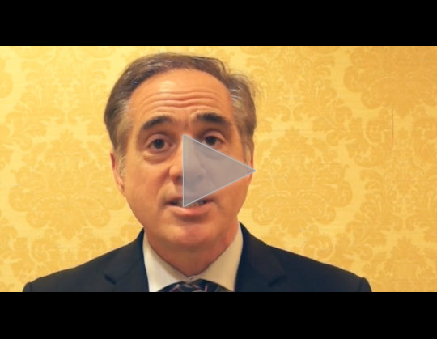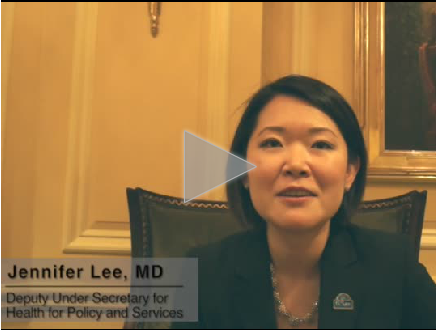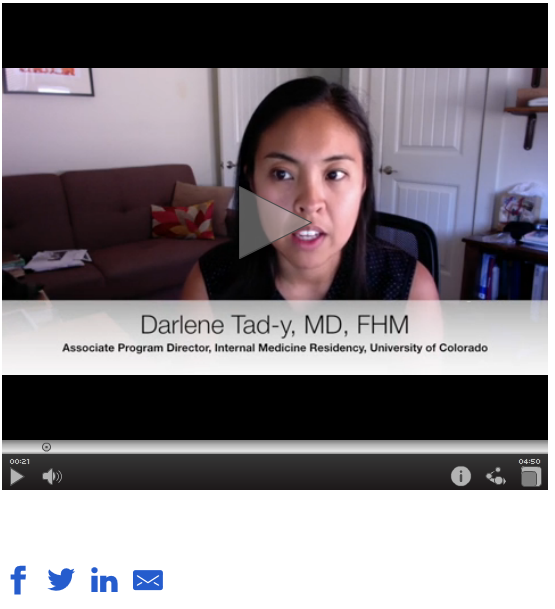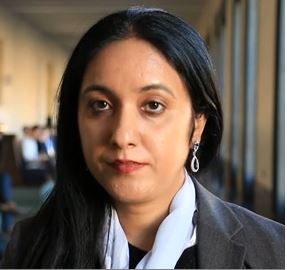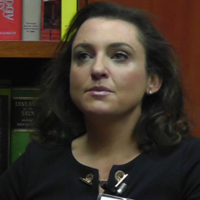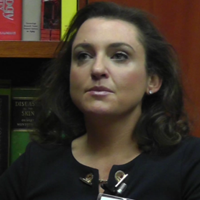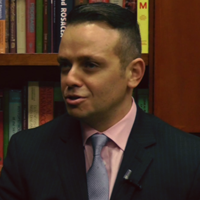User login
Shulkin Addresses APRN Rule, Health Care Vacancies, and Access
At the recent Launch Pad: Pathways to Cancer Innovation, November 29, 2016, Federal Practitioner sat down for an exclusive interview with VA Under Secretary of Health David J. Shulkin, MD. The below video that discusses ongoing efforts to improve coordination of care with community providers, the VA’s commitment to expanding the scope of practice for advanced practice registered nurses (APRNs), and the recruitment challenges for filling more than 46,000 health care vacancies. Dr. Shulkin also discussed VA progress over the past 18 months.
The video associated with this article is no longer available on this site. Please view all of our videos on the MDedge YouTube channel
At the recent Launch Pad: Pathways to Cancer Innovation, November 29, 2016, Federal Practitioner sat down for an exclusive interview with VA Under Secretary of Health David J. Shulkin, MD. The below video that discusses ongoing efforts to improve coordination of care with community providers, the VA’s commitment to expanding the scope of practice for advanced practice registered nurses (APRNs), and the recruitment challenges for filling more than 46,000 health care vacancies. Dr. Shulkin also discussed VA progress over the past 18 months.
The video associated with this article is no longer available on this site. Please view all of our videos on the MDedge YouTube channel
At the recent Launch Pad: Pathways to Cancer Innovation, November 29, 2016, Federal Practitioner sat down for an exclusive interview with VA Under Secretary of Health David J. Shulkin, MD. The below video that discusses ongoing efforts to improve coordination of care with community providers, the VA’s commitment to expanding the scope of practice for advanced practice registered nurses (APRNs), and the recruitment challenges for filling more than 46,000 health care vacancies. Dr. Shulkin also discussed VA progress over the past 18 months.
The video associated with this article is no longer available on this site. Please view all of our videos on the MDedge YouTube channel
Dr. Jennifer Lee on VA Cancer Care
Federal Practitioner recently sat down with VA Deputy Under Secretary for Health for Policy and Services Jennifer Lee, MD, at the recent Launch Pad: Pathways to Cancer Innovation summit, November 29, 2016. In the interview, Dr. Lee discussed access to clinical trials for veterans, research, and the importance of partnering with other agencies, industry, and nonprofits to further veteran cancer care.
In the year since taking over for Madhulika Agarwal, MD, MPH, in the position, Dr. Lee has provided guidance to the Under Secretary for Health on matters related to health care policy, strategic objectives, and policy requirements for legislatively mandated health care delivery programs. She also directs research and other health policy and services programs within the VHA.
The video associated with this article is no longer available on this site. Please view all of our videos on the MDedge YouTube channel
Federal Practitioner recently sat down with VA Deputy Under Secretary for Health for Policy and Services Jennifer Lee, MD, at the recent Launch Pad: Pathways to Cancer Innovation summit, November 29, 2016. In the interview, Dr. Lee discussed access to clinical trials for veterans, research, and the importance of partnering with other agencies, industry, and nonprofits to further veteran cancer care.
In the year since taking over for Madhulika Agarwal, MD, MPH, in the position, Dr. Lee has provided guidance to the Under Secretary for Health on matters related to health care policy, strategic objectives, and policy requirements for legislatively mandated health care delivery programs. She also directs research and other health policy and services programs within the VHA.
The video associated with this article is no longer available on this site. Please view all of our videos on the MDedge YouTube channel
Federal Practitioner recently sat down with VA Deputy Under Secretary for Health for Policy and Services Jennifer Lee, MD, at the recent Launch Pad: Pathways to Cancer Innovation summit, November 29, 2016. In the interview, Dr. Lee discussed access to clinical trials for veterans, research, and the importance of partnering with other agencies, industry, and nonprofits to further veteran cancer care.
In the year since taking over for Madhulika Agarwal, MD, MPH, in the position, Dr. Lee has provided guidance to the Under Secretary for Health on matters related to health care policy, strategic objectives, and policy requirements for legislatively mandated health care delivery programs. She also directs research and other health policy and services programs within the VHA.
The video associated with this article is no longer available on this site. Please view all of our videos on the MDedge YouTube channel
Kimford J. Meador, MD
The video associated with this article is no longer available on this site. Please view all of our videos on the MDedge YouTube channel
The video associated with this article is no longer available on this site. Please view all of our videos on the MDedge YouTube channel
The video associated with this article is no longer available on this site. Please view all of our videos on the MDedge YouTube channel
T-Capsulotomy to Improve Visualization of the Peripheral Compartment and Repair
The video associated with this article is no longer available on this site. Please view all of our videos on the MDedge YouTube channel
The video associated with this article is no longer available on this site. Please view all of our videos on the MDedge YouTube channel
The video associated with this article is no longer available on this site. Please view all of our videos on the MDedge YouTube channel
VIDEO: Tips & Strategies for the Hospital Medicine Job Search
Dr. Thomas Frederickson, Dr. Benjamin Frizner, and Dr. Darlene Tad-y are all experienced at hiring and mentoring hospitalists at all career stages. They offer tips and strategies for assessing opportunity and negotiating your ideal HM job.
The video associated with this article is no longer available on this site. Please view all of our videos on the MDedge YouTube channel
Dr. Thomas Frederickson, Dr. Benjamin Frizner, and Dr. Darlene Tad-y are all experienced at hiring and mentoring hospitalists at all career stages. They offer tips and strategies for assessing opportunity and negotiating your ideal HM job.
The video associated with this article is no longer available on this site. Please view all of our videos on the MDedge YouTube channel
Dr. Thomas Frederickson, Dr. Benjamin Frizner, and Dr. Darlene Tad-y are all experienced at hiring and mentoring hospitalists at all career stages. They offer tips and strategies for assessing opportunity and negotiating your ideal HM job.
The video associated with this article is no longer available on this site. Please view all of our videos on the MDedge YouTube channel
VIDEO: Angiogenesis has a role to play in NASH and NAFLD
BOSTON – A multimodal research process has provided clues to the role of angiogenesis in nonalcoholic fatty liver disease (NAFLD) and its more serious cousin, nonalcoholic steatohepatitis (NASH).
In constructing a protocol that began with patients, moved on to bioinformatics and then performed final validation in the petri dish, Savneet Kaur, PhD, and her colleagues were able to identify several angiogenesis genes likely to contribute to the development of NAFLD and NASH.
“We have seen angiogenic mechanisms and angiogenic genes in the pathophysiology of nonalcoholic fatty liver disease,” said Dr. Kaur, professor of biotechnology at Gautam Buddha Medical School, Greater Noida, India, in a video interview at the annual meeting of the American Association for the Study of Liver Diseases.
The video associated with this article is no longer available on this site. Please view all of our videos on the MDedge YouTube channel
Dr. Kaur said that she and her coinvestigators began with a small group of eight patients with NASH, and seven patients with NAFLD, and also with seven healthy control participants. Genetic analysis and comparison of these patients yielded differential expression of certain genes already known to be associated with angiogenesis in the NASH and NAFLD, but not the healthy control participants.
“We did a microarray analysis, a high throughput gene expression study, and then we selected around 25 to 26 genes which were associated with oxidative stress and angiogenesis,” said Dr. Kaur.
For validation of these genes, Dr. Kaur and her associates used a larger study group of about 150 participants, again approximately evenly divided between those with mild NAFLD, those with more severe steatohepatitis, and healthy controls. “We validated the angiogenic genes in the subject group, and found that around 13 genes are preferentially expressed.”
“About 13 genes including VEGFR1, PIK3CA, CXCL8, NOS3, EREG, CCL2, PRKCE, PPar-gamma, PROK2, RUNX1, SIRT1, HMOX1 and CXCR4 showed significantly different gene expression in the [reverse transcription–polymerase chain reaction] analysis in Gr3 as compared to Gr1 (P less than .05 for each), whereas genes such as PIK3CA, CXCL8, NOS3, CCL2, PROK2, RUNX1, and HMOX1 were differentially expressed in Gr3 in comparison to Gr2 (P less than .05 each). A few genes, PPar-gamma, SIRT1, VEGFR1, HMOX1, PIK3CA, CXCR4, PROK2, and CCL2, showed correlations with fibrosis scores, angiogenesis scores, and NAFLD activity scores of the patients,” wrote Dr. Kaur and her colleagues in the abstract accompanying the poster presentation.
Taking these candidate genes, Dr. Kaur and her colleagues conducted a bioinformatics analysis to determine which transcription factors were controlling the genes. “We wanted to study the pathway – the mechanisms – to determine the upregulation and downregulation of these genes,” said Dr. Kaur.
Finally, Dr. Kaur and her associates took an in vitro approach, using human steatotic hepatocytes and endothelial cells, since “angiogenesis is a property of endothelial cells.” The two types of cells were cultured together, and angiogenic function and gene expression were examined, and checked against the genes and pathways identified in the first two steps. They again saw expression of the angiogenic pathways in the cell culture model. This was consistent with what is seen in patients with NAFLD and NASH: “Definitely, there’s an increase in angiogenesis. There’s an increase in the endothelial cell proliferation, with more fat, more steatosis in the patients,” said Dr. Kaur. Some genes, said Dr. Kaur, are “really important” to this process. Her group is now investigating how the genes are regulated, in order to understand better the precise role of angiogenesis in steatohepatitis.
The study was part of a joint Indo-German project, and sponsored by the Indian Council for Medical Research and the German Federal Ministry of Education and Research. Dr. Kaur reported no relevant conflicts of interest.
koakes@frontlinemedcom.com
On Twitter @karioakes
BOSTON – A multimodal research process has provided clues to the role of angiogenesis in nonalcoholic fatty liver disease (NAFLD) and its more serious cousin, nonalcoholic steatohepatitis (NASH).
In constructing a protocol that began with patients, moved on to bioinformatics and then performed final validation in the petri dish, Savneet Kaur, PhD, and her colleagues were able to identify several angiogenesis genes likely to contribute to the development of NAFLD and NASH.
“We have seen angiogenic mechanisms and angiogenic genes in the pathophysiology of nonalcoholic fatty liver disease,” said Dr. Kaur, professor of biotechnology at Gautam Buddha Medical School, Greater Noida, India, in a video interview at the annual meeting of the American Association for the Study of Liver Diseases.
The video associated with this article is no longer available on this site. Please view all of our videos on the MDedge YouTube channel
Dr. Kaur said that she and her coinvestigators began with a small group of eight patients with NASH, and seven patients with NAFLD, and also with seven healthy control participants. Genetic analysis and comparison of these patients yielded differential expression of certain genes already known to be associated with angiogenesis in the NASH and NAFLD, but not the healthy control participants.
“We did a microarray analysis, a high throughput gene expression study, and then we selected around 25 to 26 genes which were associated with oxidative stress and angiogenesis,” said Dr. Kaur.
For validation of these genes, Dr. Kaur and her associates used a larger study group of about 150 participants, again approximately evenly divided between those with mild NAFLD, those with more severe steatohepatitis, and healthy controls. “We validated the angiogenic genes in the subject group, and found that around 13 genes are preferentially expressed.”
“About 13 genes including VEGFR1, PIK3CA, CXCL8, NOS3, EREG, CCL2, PRKCE, PPar-gamma, PROK2, RUNX1, SIRT1, HMOX1 and CXCR4 showed significantly different gene expression in the [reverse transcription–polymerase chain reaction] analysis in Gr3 as compared to Gr1 (P less than .05 for each), whereas genes such as PIK3CA, CXCL8, NOS3, CCL2, PROK2, RUNX1, and HMOX1 were differentially expressed in Gr3 in comparison to Gr2 (P less than .05 each). A few genes, PPar-gamma, SIRT1, VEGFR1, HMOX1, PIK3CA, CXCR4, PROK2, and CCL2, showed correlations with fibrosis scores, angiogenesis scores, and NAFLD activity scores of the patients,” wrote Dr. Kaur and her colleagues in the abstract accompanying the poster presentation.
Taking these candidate genes, Dr. Kaur and her colleagues conducted a bioinformatics analysis to determine which transcription factors were controlling the genes. “We wanted to study the pathway – the mechanisms – to determine the upregulation and downregulation of these genes,” said Dr. Kaur.
Finally, Dr. Kaur and her associates took an in vitro approach, using human steatotic hepatocytes and endothelial cells, since “angiogenesis is a property of endothelial cells.” The two types of cells were cultured together, and angiogenic function and gene expression were examined, and checked against the genes and pathways identified in the first two steps. They again saw expression of the angiogenic pathways in the cell culture model. This was consistent with what is seen in patients with NAFLD and NASH: “Definitely, there’s an increase in angiogenesis. There’s an increase in the endothelial cell proliferation, with more fat, more steatosis in the patients,” said Dr. Kaur. Some genes, said Dr. Kaur, are “really important” to this process. Her group is now investigating how the genes are regulated, in order to understand better the precise role of angiogenesis in steatohepatitis.
The study was part of a joint Indo-German project, and sponsored by the Indian Council for Medical Research and the German Federal Ministry of Education and Research. Dr. Kaur reported no relevant conflicts of interest.
koakes@frontlinemedcom.com
On Twitter @karioakes
BOSTON – A multimodal research process has provided clues to the role of angiogenesis in nonalcoholic fatty liver disease (NAFLD) and its more serious cousin, nonalcoholic steatohepatitis (NASH).
In constructing a protocol that began with patients, moved on to bioinformatics and then performed final validation in the petri dish, Savneet Kaur, PhD, and her colleagues were able to identify several angiogenesis genes likely to contribute to the development of NAFLD and NASH.
“We have seen angiogenic mechanisms and angiogenic genes in the pathophysiology of nonalcoholic fatty liver disease,” said Dr. Kaur, professor of biotechnology at Gautam Buddha Medical School, Greater Noida, India, in a video interview at the annual meeting of the American Association for the Study of Liver Diseases.
The video associated with this article is no longer available on this site. Please view all of our videos on the MDedge YouTube channel
Dr. Kaur said that she and her coinvestigators began with a small group of eight patients with NASH, and seven patients with NAFLD, and also with seven healthy control participants. Genetic analysis and comparison of these patients yielded differential expression of certain genes already known to be associated with angiogenesis in the NASH and NAFLD, but not the healthy control participants.
“We did a microarray analysis, a high throughput gene expression study, and then we selected around 25 to 26 genes which were associated with oxidative stress and angiogenesis,” said Dr. Kaur.
For validation of these genes, Dr. Kaur and her associates used a larger study group of about 150 participants, again approximately evenly divided between those with mild NAFLD, those with more severe steatohepatitis, and healthy controls. “We validated the angiogenic genes in the subject group, and found that around 13 genes are preferentially expressed.”
“About 13 genes including VEGFR1, PIK3CA, CXCL8, NOS3, EREG, CCL2, PRKCE, PPar-gamma, PROK2, RUNX1, SIRT1, HMOX1 and CXCR4 showed significantly different gene expression in the [reverse transcription–polymerase chain reaction] analysis in Gr3 as compared to Gr1 (P less than .05 for each), whereas genes such as PIK3CA, CXCL8, NOS3, CCL2, PROK2, RUNX1, and HMOX1 were differentially expressed in Gr3 in comparison to Gr2 (P less than .05 each). A few genes, PPar-gamma, SIRT1, VEGFR1, HMOX1, PIK3CA, CXCR4, PROK2, and CCL2, showed correlations with fibrosis scores, angiogenesis scores, and NAFLD activity scores of the patients,” wrote Dr. Kaur and her colleagues in the abstract accompanying the poster presentation.
Taking these candidate genes, Dr. Kaur and her colleagues conducted a bioinformatics analysis to determine which transcription factors were controlling the genes. “We wanted to study the pathway – the mechanisms – to determine the upregulation and downregulation of these genes,” said Dr. Kaur.
Finally, Dr. Kaur and her associates took an in vitro approach, using human steatotic hepatocytes and endothelial cells, since “angiogenesis is a property of endothelial cells.” The two types of cells were cultured together, and angiogenic function and gene expression were examined, and checked against the genes and pathways identified in the first two steps. They again saw expression of the angiogenic pathways in the cell culture model. This was consistent with what is seen in patients with NAFLD and NASH: “Definitely, there’s an increase in angiogenesis. There’s an increase in the endothelial cell proliferation, with more fat, more steatosis in the patients,” said Dr. Kaur. Some genes, said Dr. Kaur, are “really important” to this process. Her group is now investigating how the genes are regulated, in order to understand better the precise role of angiogenesis in steatohepatitis.
The study was part of a joint Indo-German project, and sponsored by the Indian Council for Medical Research and the German Federal Ministry of Education and Research. Dr. Kaur reported no relevant conflicts of interest.
koakes@frontlinemedcom.com
On Twitter @karioakes
AT THE LIVER MEETING 2016
Key clinical point:
Major finding: PPar-gamma, SIRT1, VEGFR1, and other genes are associated with fibrosis, angiogenesis, and steatosis.
Data source: Human bioinformatics–in vitro exploration of genetic pathways associated with angiogenesis in NASH and nonalcoholic fatty liver disease (NAFLD).
Disclosures: The study was part of a joint Indo-German project, and funded by the Indian Council for Medical Research and the German Federal Ministry of Education and Research. Dr. Kaur reported no relevant financial disclosures.
Dermoscopy Update and Noninvasive Imaging Devices for Skin Cancer: Report From the Mount Sinai Winter Symposium
At the 19th Annual Mount Sinai Winter Symposium, Dr. Orit Markowitz provided an update on dermoscopy as a first-line noninvasive imaging modality for skin cancer screening and diagnosis along with reflectance confocal microscopy and dynamic optical coherence tomography. She explained how noninvasive imaging offers a more complete picture of lesions along with what is seen clinically and on pathology and discussed how it can help catch aggressive melanomas and other skin cancers at earlier stages. For these reasons, she emphasized that increased use of dermoscopy can be used to justify the need for regular skin cancer screenings. Finally, she discussed how noninvasive imaging can be used to guide dermatologists in performing optimal biposies of suspicious lesions.
The video associated with this article is no longer available on this site. Please view all of our videos on the MDedge YouTube channel
At the 19th Annual Mount Sinai Winter Symposium, Dr. Orit Markowitz provided an update on dermoscopy as a first-line noninvasive imaging modality for skin cancer screening and diagnosis along with reflectance confocal microscopy and dynamic optical coherence tomography. She explained how noninvasive imaging offers a more complete picture of lesions along with what is seen clinically and on pathology and discussed how it can help catch aggressive melanomas and other skin cancers at earlier stages. For these reasons, she emphasized that increased use of dermoscopy can be used to justify the need for regular skin cancer screenings. Finally, she discussed how noninvasive imaging can be used to guide dermatologists in performing optimal biposies of suspicious lesions.
The video associated with this article is no longer available on this site. Please view all of our videos on the MDedge YouTube channel
At the 19th Annual Mount Sinai Winter Symposium, Dr. Orit Markowitz provided an update on dermoscopy as a first-line noninvasive imaging modality for skin cancer screening and diagnosis along with reflectance confocal microscopy and dynamic optical coherence tomography. She explained how noninvasive imaging offers a more complete picture of lesions along with what is seen clinically and on pathology and discussed how it can help catch aggressive melanomas and other skin cancers at earlier stages. For these reasons, she emphasized that increased use of dermoscopy can be used to justify the need for regular skin cancer screenings. Finally, she discussed how noninvasive imaging can be used to guide dermatologists in performing optimal biposies of suspicious lesions.
The video associated with this article is no longer available on this site. Please view all of our videos on the MDedge YouTube channel
Dermoscopy Pearls: Report From the Mount Sinai Winter Symposium
At the 19th Annual Mount Sinai Winter Symposium, Dr. Orit Markowitz addressed some common questions physicians have about dermoscopy, including what kind of dermatoscope to buy, how to incorporate dermoscopy into a dermatology practice, and how to efficiently perform skin examinations using a dermatoscope. She also emphasized the importance of attending courses and workshops to learn how to utilize dermoscopy and other noninvasive imaging devices effectively.
The video associated with this article is no longer available on this site. Please view all of our videos on the MDedge YouTube channel
At the 19th Annual Mount Sinai Winter Symposium, Dr. Orit Markowitz addressed some common questions physicians have about dermoscopy, including what kind of dermatoscope to buy, how to incorporate dermoscopy into a dermatology practice, and how to efficiently perform skin examinations using a dermatoscope. She also emphasized the importance of attending courses and workshops to learn how to utilize dermoscopy and other noninvasive imaging devices effectively.
The video associated with this article is no longer available on this site. Please view all of our videos on the MDedge YouTube channel
At the 19th Annual Mount Sinai Winter Symposium, Dr. Orit Markowitz addressed some common questions physicians have about dermoscopy, including what kind of dermatoscope to buy, how to incorporate dermoscopy into a dermatology practice, and how to efficiently perform skin examinations using a dermatoscope. She also emphasized the importance of attending courses and workshops to learn how to utilize dermoscopy and other noninvasive imaging devices effectively.
The video associated with this article is no longer available on this site. Please view all of our videos on the MDedge YouTube channel
Timed Sequential Therapy for Actinic Keratosis: Report From the Mount Sinai Winter Symposium
The video associated with this article is no longer available on this site. Please view all of our videos on the MDedge YouTube channel
The video associated with this article is no longer available on this site. Please view all of our videos on the MDedge YouTube channel
The video associated with this article is no longer available on this site. Please view all of our videos on the MDedge YouTube channel
Nonsurgical Treatment of Basal Cell Carcinoma: Report From the Mount Sinai Winter Symposium
The video associated with this article is no longer available on this site. Please view all of our videos on the MDedge YouTube channel
The video associated with this article is no longer available on this site. Please view all of our videos on the MDedge YouTube channel
